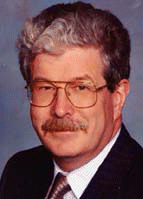In the absence of higher levels of evidence (case series and expert opinion are rated scientific evidence levels 4 and 5, respectively), Dr. Senior says he uses the grandmother test. If you would use the system to operate on your grandmother, then it is probably appropriate that it be used for your patient, as well.
Explore This Issue
May 2007Not for Every Case
Dr. Fried freely concedes that his opinion about image guidance is very biased. Navigation for sinus surgery has been a passion of mine for a long time, he said. He uses image guidance in almost every case of ESS at his institution, because it is a useful as a teaching aid.
Dr. Senior believes that image guidance in ESS need not be used for every case. This technology is best utilized in more complex situations, such as the complicated revision sinus surgery patient; patients who have anatomic abnormalities in their sinuses, such as tumors or complications related to previous surgeries; and patients with cerebrospinal fluid leaks or intraorbital injury.
Currently, Dr. Kennedy is working with the other rhinologists at Penn conducting a study to evaluate the use of a portable intraoperative low-dose CT scanner that allows the original CT information to be updated during the procedure. The study is exploring whether use of intraoperative CT changes the surgical procedure when attempting a complete sphenoethmoidectomy. The study, he said, asks whether using the updated CT information allows surgeons to find areas that they have not opened. Based on cases performed before the study began, Dr. Kennedy believes that his study will reveal an affirmative answer to that question.
The American Academy of Otolaryngology and the American Rhinologic Society have developed guidelines for the use of navigation in adult sinus surgery. Dr. Parikh, as chair of the ARS pediatric committee, reports that his committee is currently working on establishing similar guidelines for pediatric cases.
What about Kids?
Dr. Parikh has had extensive experience using image guidance in pediatric sinus surgery cases. He and colleagues at the Albert Einstein College of Medicine were set to present their five-year case series at the recent Triological Society meeting, but were casualties of the Jet Blue flight cancellations. Dr. Parikh believes his series is the first to be reported in North America. The team tracked 33 patients under the age of 18 who underwent image-guided sinus surgery. The most common diagnoses included chronic (30.3%) and acute (12.1%) rhinosinusitis, nasopharyngeal angiofibroma (9.1%), allergic rhinosinusitis (9.1%) and allergic fungal sinusitis (9.1%). There were no complications after any of the procedures.


Leave a Reply